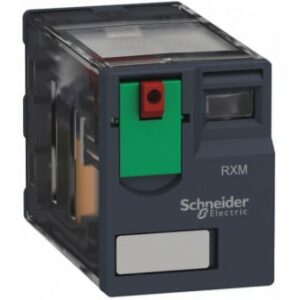Description
| คุณสมบัติ | Value |
| Coil Voltage | 110 V ac |
| Number of Poles | 3 |
| Contact Current Rating | 25 A |
| Power Rating | 11 kW |
| Normal State Configuration | 3NO |
| Contact Voltage Rating | 300 V dc, 690 V ac |
| Range | TeSys D |
| Series | LC1D |
| Number Of Auxiliary Contacts | 2 |
| Terminal Type | Lug Ring Terminal |
| Width | 92mm |
| Depth | 85mm |
| Length | 45mm |
| Minimum Operating Temperature | -5°C |
| Maximum Operating Temperature | +60°C |
3 pole Contactors, AC Controlled, under 18kW power rating
TeSys D Contactors from Schneider Electric combine long mechanical and electrical life to offer a high reliable contactor. The range has been designed for integration in control systems and can be used to create motor starters for any type of application. The TeSys D contactors offer quick simple setup while maintaining compliance with international standards.
Features and Benefits.
Utilisation category AC3
415 Vac switching voltage
Pole Contact Composition: 3 NO
Auxiliary Contacts: 1 N/O + 1 N/C
What does the utilisation category AC1 and AC3 mean for the TeSys contactors?
- Contactor utilisation categories define the current making and breaking values, based on the type of load to be controlled and the operating cycle conditions.
- AC-1: This applies to all AC devices with a power factor of at least 0.95. Example of use: resistive load, heating, distribution.
- AC-3: This applies to squirrel cage motors where breaking occurs while the motor is running. Example of use: all squirrel cage motors, lifts, escalators, conveyors, bucket elevators, compressors, pumps, mixers, air conditioning units.
What accessories are available?
- Auxiliary contact blocks with serrated wiping action.
- Front mount dust tight auxiliary contact blocks.
- Pneumatic time delay blocks.
- Transient voltage surge suppressors.
- Interface modules and electronic timers.
- Mechanical latching blocks.
Is the TeSys D range a double break pole type contactor?
- Yes, the Tesys D range uses linear translation movement that provides double breaking of the poles.
Approvals
UL and CSA










